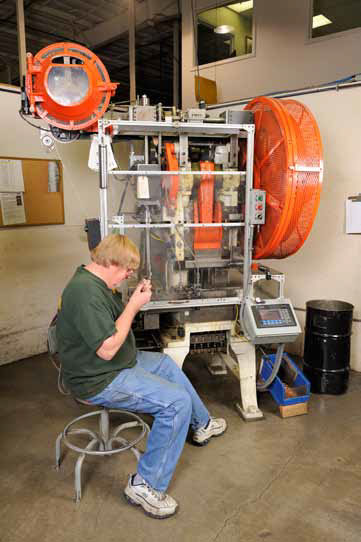Processes used in the production of metal mesh
1.Galvanizing = The operation results in which a thin layer of zinc is coated with steel, iron or metal to protect them from corrosion by giving them a decorative appearance.2. Hot-dip Galvanizing = The technological process of "Hot-dip Galvanizing" consists in coating the table wire with a thin, even layer by immersion in a bath with molten zinc to provide double protection (mechanical and cathodic) thus protecting against corrosion and providing a decorative appearance of the final product.3. Polyvinyl Chloride coating = This process has been improved and developed exclusively in accordance with the requirements in order to achieve exceptional durability and corrosion resistance from the final product. Thus, the hot-dip galvanized steel wire is placed in a special bath with a primer and then in polyvinyl chloride. The primer promotes maximum adhesion of PVC on metal. This method provides the wire with a uniform and uniform coating. Under normal conditions, products that have been subjected to this process have a guarantee against corrosion for at least 10 years.4. Primer = a product in which galvanized wires, steel rods or galvanized metal mesh will be introduced to increase the adhesion of the PVC coating obtained for sintering.5.The technological process that offers products with a thick layer of zinc. This layer is much higher than the minimum allowed by the norms in this area (coverage is about 3 times higher). This method provides perfect adhesion, and the coatings are clean, uniform and uniform, being a double barrier both physical and electrochemical against the oxidation process. Another important property of the zinc coating obtained by this method is high resistance to rupture using the product at the limit of the established technical standards. After testing, the reinforced galvanized steel wire is able to withstand normal climate conditions in rural areas for at least 20 years.6. The technological process in which 95% zinc and 5% aluminum are used for coating the product. Coating metal rods with a layer of such an alloy is a novelty in this field. Which gives the final product high corrosion resistance and special protection against possible damage and scratches, having a warranty for 30 years.7. Extrusion is a method of processing materials (metals, plastics) by plastic deformation, consisting in pushing the melt of the material under the action of compression force through a matrix of a suitable shape.8. Deformation is a material processing process based on changing materials to get the desired shape and size Explore the world of casino software providers at All Slots Online Casino. Learn about the companies behind your favorite games and discover their extensive range of offerings.

PRODUCING THE BULLET JACKET
All our bullet jackets are made from gilding metal, a copper alloy composed of 95% copper and 5% zinc. In order to match our different bullet requirements and meet stringent quality objectives, we buy nineteen different strip sizes of gilding metal and require three times more dimensional and quality control than is considered standard in the copper manufacturing industry. In fact, Olin Brasshas a special alloy exclusive to Sierra Bullets. This enables us to build extremely high uniformity into every one of our finished bullets.
The bullet begins to take shape during the manufacturing process when the jacket material is first blanked and then brought through a series of drawing processes. Special tooling made in our own tool and die shop ensures that the jacket is drawn evenly and that uniform wall thickness is maintained for accuracy. Jackets which have been drawn to the proper wall construction are then trimmed to a length with a tolerance of +/- 0.001.” This ensures consistent weight and proper forming when the bullet is assembled.
After each step, the bullet jackets are washed and rinsed using a special cleaning process developed by our experienced personnel. During each phase of production, roving quality control inspectors check specifications to ensure that the only part to move on is a perfect one. Reports on the quality of parts being manufactured are maintained in every department and are periodically reviewed by shift supervisors.
